-
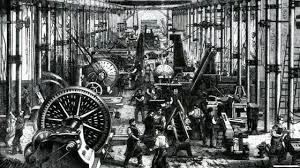 The first Industrial Revolution was a period of major mechanical and technological advancements. It started in Britain, but spread to various parts of the world. During this time, industries and jobs transitioned from being hand-manual production to mainly machine based production.
The first Industrial Revolution was a period of major mechanical and technological advancements. It started in Britain, but spread to various parts of the world. During this time, industries and jobs transitioned from being hand-manual production to mainly machine based production. -
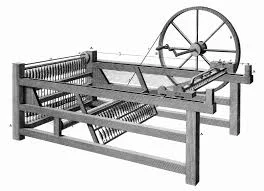 The Spinning Jenny was invented by James Hargreaves. It was a major factor in the new development of the textile industry. The Jenny allowed threads to be spun faster and more efficiently.
The Spinning Jenny was invented by James Hargreaves. It was a major factor in the new development of the textile industry. The Jenny allowed threads to be spun faster and more efficiently. -
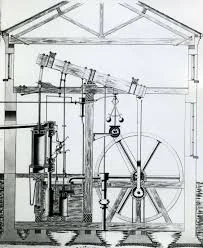 Although the Steam Engine was developed over a large period of time, James Watt made a major improvement to it during the Industrial Revolution. He enabled the engine to drive the machinery itself. The machine was overall used to spin and weave cotton.
Although the Steam Engine was developed over a large period of time, James Watt made a major improvement to it during the Industrial Revolution. He enabled the engine to drive the machinery itself. The machine was overall used to spin and weave cotton. -
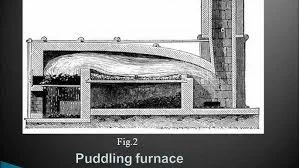 This method was invented by Henry Cort. It was the first way that allowed wrought iron to be produced at a large scale. Puddling is the process of converting pig iron into wrought iron.
This method was invented by Henry Cort. It was the first way that allowed wrought iron to be produced at a large scale. Puddling is the process of converting pig iron into wrought iron. -
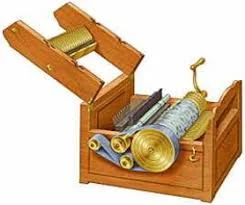 The Cotton Gin is a machine that separates cotton seed from cotton fibers. It is a more efficient way rather than picking by hand. It was invented by Eli Whitney, and greatly increased the productivity of the Cotton industry at this time.
The Cotton Gin is a machine that separates cotton seed from cotton fibers. It is a more efficient way rather than picking by hand. It was invented by Eli Whitney, and greatly increased the productivity of the Cotton industry at this time. -
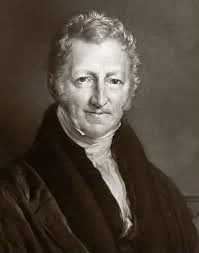 Thomas Malthus first introduced the idea of the Population theory during this time. His opinion caught people's attention in his book, "Essay on the Principle of Population", which was published in 1798. His theory focuses on the idea that the population tends to grow faster than agricultural output, which could further lead to economic crises or famines.
Thomas Malthus first introduced the idea of the Population theory during this time. His opinion caught people's attention in his book, "Essay on the Principle of Population", which was published in 1798. His theory focuses on the idea that the population tends to grow faster than agricultural output, which could further lead to economic crises or famines. -
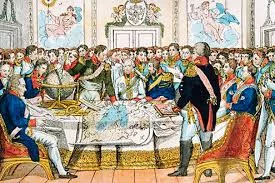 The Congress of Vienna was a meeting between multiple European nations, in which their strategy was to try and maintain peace within the continent. It was formed after the defeat of Napoleon Bonaparte. They were overall a series of meetings set in order to make specific agreements to try and keep stability among the different nations.
The Congress of Vienna was a meeting between multiple European nations, in which their strategy was to try and maintain peace within the continent. It was formed after the defeat of Napoleon Bonaparte. They were overall a series of meetings set in order to make specific agreements to try and keep stability among the different nations. -
 The world's first mainline railway was located in Britain. It went from Liverpool to Manchester, and it included a scheduled passenger and freight service. Railroads at the time overall created more jobs, lowered the price of goods, and allowed for more factories. This was key to Britain's industrial success.
The world's first mainline railway was located in Britain. It went from Liverpool to Manchester, and it included a scheduled passenger and freight service. Railroads at the time overall created more jobs, lowered the price of goods, and allowed for more factories. This was key to Britain's industrial success. -
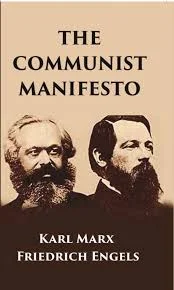 The "Communist Manifesto" was a book written by Karl Marx. The book's main theory expresses that capitalism will cause destruction by unifying the proletariat. The book also predicts that a revolution will lead to a classless society, which would be communism.
The "Communist Manifesto" was a book written by Karl Marx. The book's main theory expresses that capitalism will cause destruction by unifying the proletariat. The book also predicts that a revolution will lead to a classless society, which would be communism. -
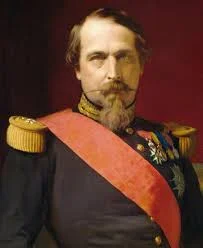 Louis-Napoleon was the first and only president of the French Second Republic. He mainly seized his power by force. His presidency overall turned into an imperial title due to him proclaiming himself as Emperor of the French.
Louis-Napoleon was the first and only president of the French Second Republic. He mainly seized his power by force. His presidency overall turned into an imperial title due to him proclaiming himself as Emperor of the French. -
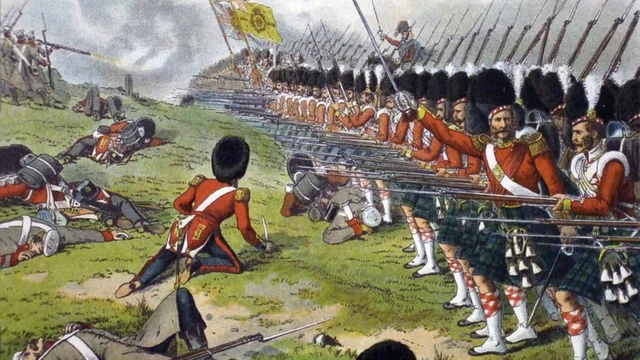 The Crimean War was fought mainly between the Russian Empire and the Ottoman Empire. The main alliance within the war consisted of the nations of Britain, France, Turkey, and Sardinia. Russia ends up being defeated in this war.
The Crimean War was fought mainly between the Russian Empire and the Ottoman Empire. The main alliance within the war consisted of the nations of Britain, France, Turkey, and Sardinia. Russia ends up being defeated in this war. -
 Florence Nightingale was an English social reformer who is credited to the founding of modern nursing. She is mainly known for being a trainer and manager of nurses during the Crimean War. in 1854, she led a group of 38 nurses to care for wounded British soldiers during the war.
Florence Nightingale was an English social reformer who is credited to the founding of modern nursing. She is mainly known for being a trainer and manager of nurses during the Crimean War. in 1854, she led a group of 38 nurses to care for wounded British soldiers during the war. -
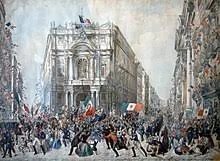 Italy becoming a state first started with the unification of the majority of the peninsula. King Victor Emmanuel II united the nation. He was the leader of the House of Savoy.
Italy becoming a state first started with the unification of the majority of the peninsula. King Victor Emmanuel II united the nation. He was the leader of the House of Savoy. -
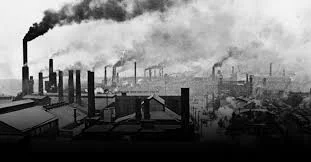 The second Industrial Revolution is also known as the Technological Revolution. During this time there were major scientific discoveries and mass production of products due to the continuing development of industrial machines. Overall most new things established in the first industrial revolution were expanded and improved upon, such as railroads.
The second Industrial Revolution is also known as the Technological Revolution. During this time there were major scientific discoveries and mass production of products due to the continuing development of industrial machines. Overall most new things established in the first industrial revolution were expanded and improved upon, such as railroads. -
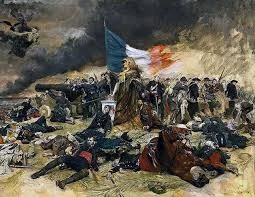 The Franco-Prussian war was fought between the Second French Empire and the North German Confederation. The German Confederation was led by the Kingdom of Prussia. The war ended in German victory, but also caused the end of the Second French Empire.
The Franco-Prussian war was fought between the Second French Empire and the North German Confederation. The German Confederation was led by the Kingdom of Prussia. The war ended in German victory, but also caused the end of the Second French Empire. -
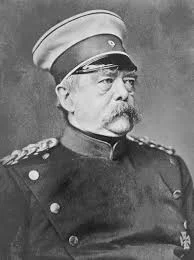 After Prussia's victory in the Franco-Prussian War, Germany became unified. At this time, most German-speaking states united under the crown of Prussia. Otto von Bismarck led the German Empire during this period.
After Prussia's victory in the Franco-Prussian War, Germany became unified. At this time, most German-speaking states united under the crown of Prussia. Otto von Bismarck led the German Empire during this period. -
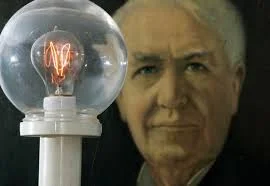 Thomas Edison was the inventor of the light bulb. He made an incandescent bulb which burned long enough to light a home for practical hours. It was very helpful for people who needed to work after the sun went down.
Thomas Edison was the inventor of the light bulb. He made an incandescent bulb which burned long enough to light a home for practical hours. It was very helpful for people who needed to work after the sun went down. -
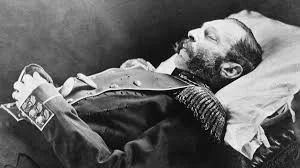 Czar Alexander II was the emperor of Russia, King of Poland and Grand Duke of Finland. He was known as Alexander the Liberator. He is assassinated by a bomb thrown at him in hopes by the killer to overthrow Russia's autocracy.
Czar Alexander II was the emperor of Russia, King of Poland and Grand Duke of Finland. He was known as Alexander the Liberator. He is assassinated by a bomb thrown at him in hopes by the killer to overthrow Russia's autocracy. -
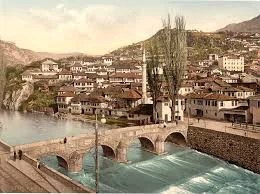 As a part of an effort to take control of the entire Balkan region, Austria-Hungary Annexed both Bosnia and Herzegovina. This gave them the ability to expand their power. Both of these countries were located in Southeast Europe.
As a part of an effort to take control of the entire Balkan region, Austria-Hungary Annexed both Bosnia and Herzegovina. This gave them the ability to expand their power. Both of these countries were located in Southeast Europe. -
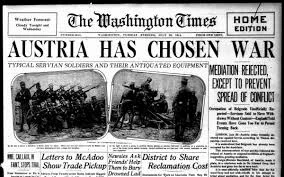 In order to assert dominance, Austria-Hungary declared war on Serbia. This was based on nationalism and ethnic tensions. After multiple countries formed alliances with both sides, this war led to the start of World War 1.
In order to assert dominance, Austria-Hungary declared war on Serbia. This was based on nationalism and ethnic tensions. After multiple countries formed alliances with both sides, this war led to the start of World War 1. -